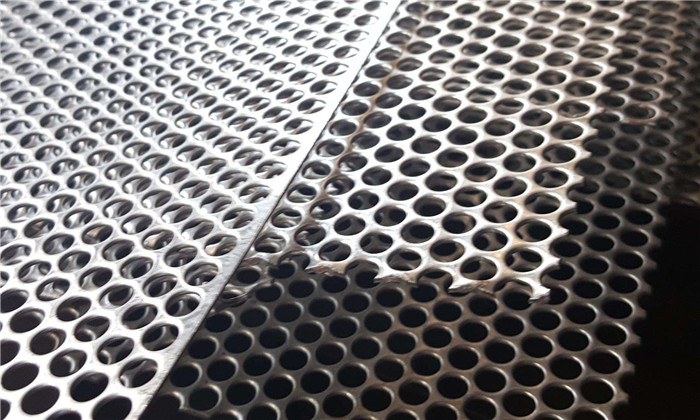Causes of Perforated Sheet Size Error and How to Minimize Dimensional Tolerance
Source:www.cn-psp.cnAuthor:河北森驰公司 Last updated:2025-06-10 22:14:55 Browse:
Perforated sheets are widely used in industries such as architecture, machinery, and ventilation due to their strength, functionality, and aesthetics. Recently, a client sent us a perforated sheet drawing requiring an extremely high dimensional accuracy of 0.1mm. However, based on extensive production experience, our technician pointed out that a typical dimensional tolerance is around 1mm in practice.
So what causes this size error in perforated sheets, and can it be fully avoided? Let’s explore this in detail.
1. Dimensional Error During Cutting
Perforated sheet production begins with large rolls or sheets of metal that must be cut to size. This is typically done using a shearing machine or CNC cutting system. However, due to manual adjustments and equipment limitations, a certain degree of size deviation is inevitable.
For thicker materials, the required cutting force is greater, and even slight deviations in blade alignment or cutting pressure can lead to uneven edges or dimensional inconsistencies. Human factors also play a role—if the operator misjudges or fails to adjust settings accurately, the resulting sheets may vary in length or width.
In some cases, internal stress is released during cutting, especially in thick sheets, causing minor warping or edge curling, which further affects the final size.
2. Deformation During Punching
Punching is the core process of producing perforated metal sheets. CNC punching machines apply intense force to punch holes into the sheet. This mechanical impact often leads to local deformation, particularly in thicker sheets.
Although flattening machines are used post-punching to level the sheet, complete flatness is hard to achieve due to residual stress or micro-deformations. Even if the sheet appears flat visually, internal tension can cause slight dimensional drift.
Additional factors like punching sequence, tool wear, and generated heat can all contribute to perforated sheet size error during production.
3. Relationship Between Material Thickness and Dimensional Tolerance
One key factor affecting perforated metal size error is material thickness. Generally, the thicker the sheet, the higher the potential for dimensional deviation.
Thinner sheets require less punching and cutting force, making it easier to maintain consistent dimensions—often within 1mm. However, thicker materials are more prone to deformation under force, and size errors can reach 1–2mm or more.
Therefore, when specifying dimensional tolerance for perforated sheets, material thickness must be considered carefully.

perforated sheet
4. Can Perforated Sheet Size Error Be Completely Avoided?
In industrial manufacturing, it is nearly impossible to achieve zero error. However, perforated sheet dimensional tolerance can be significantly reduced with the following best practices:
Use High-Precision Equipment: Advanced CNC cutting and punching machines reduce baseline error.
Standardize Operator Procedures: Training and consistent workflows help ensure accuracy across all batches.
Implement Real-Time Quality Control: On-site measurement checkpoints catch size issues early in production.
Apply Post-Processing: Flattening, stress-relieving, and trimming help correct minor deformations.
Customize Production for High-Precision Orders: For projects with strict dimensional requirements, specialized processing plans can be created.
5. What Should Customers Be Aware Of?
For orders that demand extremely high precision, customers should understand the natural limitations of the manufacturing process. It's advisable to:
Clearly specify acceptable dimensional tolerance in drawings.
Communicate special requirements with the manufacturer in advance.
Reach a mutual understanding on production feasibility based on material thickness and technical capabilities.
Conclusion
Perforated sheet size error results primarily from deformation during cutting and punching, and is closely linked to the thickness of the material. While these errors cannot be eliminated entirely, they can be effectively controlled through advanced equipment, experienced technicians, and standardized processes.
Choosing a reliable perforated metal supplier with proven expertise is key to ensuring dimensional accuracy and consistent quality. At our company, we welcome detailed communication before order placement to ensure that both precision and performance meet your expectations.
